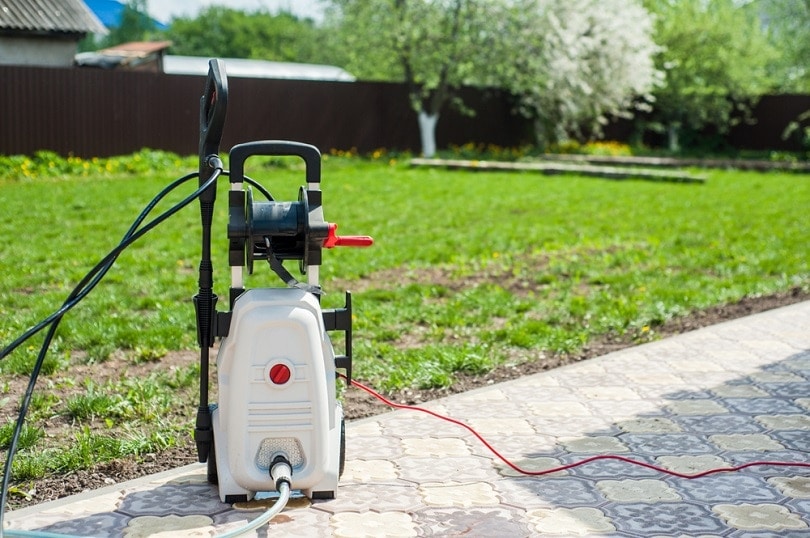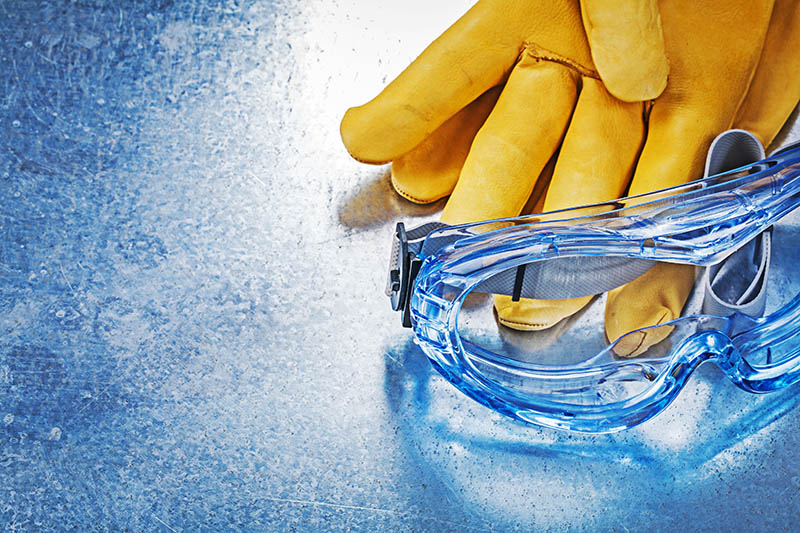10 Tips on How to Pressure Wash a House
-
Pete Ortiz
- Last updated:

If you’re like most homeowners, you probably don’t give your house a good cleaning very often. It’s just too much work! But what if there was an easy way to clean it without having to spend hours scrubbing?
Well, that’s what pressure washing is about!
Pressure washing involves using a high-powered water spray to remove dirt and grime from the surface of your house. It’s a great way to tackle tough stains and spills that are difficult to get rid of with traditional cleaning methods.
However, this doesn’t mean that pressure washing will magically make all the dirt and grime in your house disappear. Far from that, pressure washing is an art that requires some skill and knowledge in order to be done correctly. So, if you’re looking to pressure wash your house, here are a few top tips to keep in mind.
The 10 Tips on How to Pressure Wash a House
1. Choose the Right Pressure Washer

Not all pressure washers are built the same. There’s a plethora of pressure washers to choose from, from electric models to gas-powered ones, and you must find the best one for your needs.
Gas-powered pressure washers will deliver between 2,000 and 2,800 psi of force. Electric ones, on the other hand, will give about 1,500 psi. While both will work well for cleaning tasks, a gas-powered pressure washer is better suited to more heavy-duty jobs, while an electric one is ideal if you’re looking for something more portable and lightweight.
2. Prepare Adequately
Ensure you adequately prepare the cleaning area before you get to work. This means clearing away items like patio furniture and window screens on or around the surface that you’re planning to wash. Also, make sure that any electrical outlets and light fixtures are covered or turned off, as the high-pressure water can easily damage them.
Once you’re done prepping the house, check whether the pressure washer is up to the task. Start by checking that all the washer’s accessories are connected securely. Also, check the inlet filter and clear any debris. If everything checks out, you can wash away!
3. Safety First

When pressure washing, it’s important that you wear the proper safety equipment. This means eye protection and heavy-duty work gloves to protect against debris and flying objects.
Make sure that you keep a safe distance from the surface of your house when pressure washing. Too close, and you risk damaging the paint or stucco. Too far, and you won’t be able to get those tough stains off. A good rule of thumb is to keep your pressure washer at least 8 inches away from any surface you’re cleaning.
4. Understand the Different Nozzle Types
Pressure washers generally come with a selection of nozzles, each one designed to tackle different surfaces or stains. Understanding the different nozzle types and their uses can help you get your house extra clean in no time! The common nozzle types include:
- Red nozzle (0 degree): This nozzle is best for heavy-duty cleaning jobs. It delivers high, concentrated pressure to remove stubborn stains and leaves surfaces sparkling clean, but can damage sensitive surfaces
- Yellow nozzle (15 degrees): A good choice if you’re looking to clean tough stains or clear surfaces for painting or resealing.
- Green nozzle (25 degrees): A medium-pressure nozzle that’s perfect for general cleaning masonry, without damaging it.
- White nozzle (40 degrees): A low-pressure nozzle that’s best suited for general home exterior cleaning
- Black nozzle (65 degrees): Very low pressure and is only used to wet surfaces. Doesn’t accomplish any cleaning.
5. Always Start From a Distance

Once you’ve assessed the surface you’re cleaning and have chosen the right nozzle, you must start pressure washing from a distance. This will give the water time to build up enough pressure before it hits the surface, ensuring that damage is minimal if any.
Start off at least five feet away and slowly work closer as necessary. Remember to be patient, as the pressure washer may need a few seconds before it starts ejecting grime or dirt from the surface.
6. Patch Up Any Broken Bricks or Masonry
If you have any broken bricks or masonry on your house, now would be the time to patch them up. The pressure from the water can cause these damaged areas to fall apart, leaving ugly gaps in your house’s exterior. By repairing them ahead of time, you’ll be able to clean your house with peace of mind and have it looking great in no time!
7. Protect Your Plants, Lawn, and Other Surroundings
When pressure washing your house, you must keep other parts of your yard safe from the high-pressure water. This means making sure that any plants, grass or garden areas are properly covered up to prevent them from damage. You can use a tarp or plastic sheet to protect these surfaces, or you can simply move these items away from the house.
8. Understand the Limits
While pressure washers do a great job at cleaning, they can’t clean everything. Some surfaces are simply too delicate to handle the pressure and could be damaged by it. These include delicate-painted walls, glass windows, or electrical outlets.
What’s more, stains like rust, acorns, and fertilizer are permanent. No amount of pressure washing can remove them, so if you’re ever unsure about whether your house can handle the pressure, err on the side of caution and don’t use your pressure washer.
9. Take Good Care of Your Machine

Finally, it’s important to remember that pressure washing is a lot more work than it looks. It takes a lot of effort and energy to clean your house with one, so make sure you take good care of your machine! This means checking the hose for any leaks or holes, cleaning the filters regularly, and testing the pressure before starting each job
10. Keep Adjusting the Spray Angle
Finally, don’t forget to keep adjusting the spray angle as you work. If you find that pressure washing isn’t having the desired effect on your surface, adjust the nozzle to a wider spray angle. This will increase both the power and area of cleaning, helping to remove any tough stains or build-up on your house’s exterior. After pressure washing, make sure that you give the paint or stucco on your house time to dry completely before doing any further work.
Additional Safety Tips for Pressure Washing Your Home
Pressure washing makes cleaning your home an inherently dangerous task. However, you have nothing to worry about if you keep the below safety tips in mind.
Don’t Pressure Wash Around People and Pets
Pressure washing is a loud and messy process that can be dangerous if you’re not careful. Make sure to keep people, pets, and young children away from the area while pressure washing, as flying debris or high-speed water can cause serious injuries.
Wear Protective Gear
The most important thing when it comes to safe pressure washing is to wear protective gear. This includes long pants and sleeves, closed-toe shoes, gloves, safety glasses or a mask, and possibly even a helmet and earplugs. This will help protect you from any flying debris or runoff water that may come your way.
Follow All Safety Instructions
Be sure to carefully read any instructions provided by your pressure washer, and follow them exactly as advised. Pay close attention to the pressure settings for different nozzles, and make sure not to leave the power switched on when not in use.
Use Durable Extension Cords
Electric pressure washers can be very powerful, so it’s important to use a strong and durable extension cord. Never use an extension cord that doesn’t have an adequate gauge rating or is otherwise damaged, as this could potentially lead to electrocution.
Use Gas-Powered Pressure Washes in Well-Ventilated Areas
Gas-powered pressure washers are typically more powerful than their electric counterparts but also come with an added risk of carbon monoxide poisoning. Always make sure to use a gas-powered pressure washer in well-ventilated areas, and if you begin to feel dizzy or nauseous, stop what you’re doing immediately and get fresh air!
Conclusion
Pressure washing your house is a great way to keep it looking clean and well-maintained. However, there are certain limitations and safety considerations that you should keep in mind when working. For example, bodily injuries and damage to surfaces can occur. Also, not all stains will come off. But when done properly, it is an effective way to give parts of your home a thorough cleaning!
See also:
Featured Image Credit: ANNVIPS, Shutterstock
Contents


